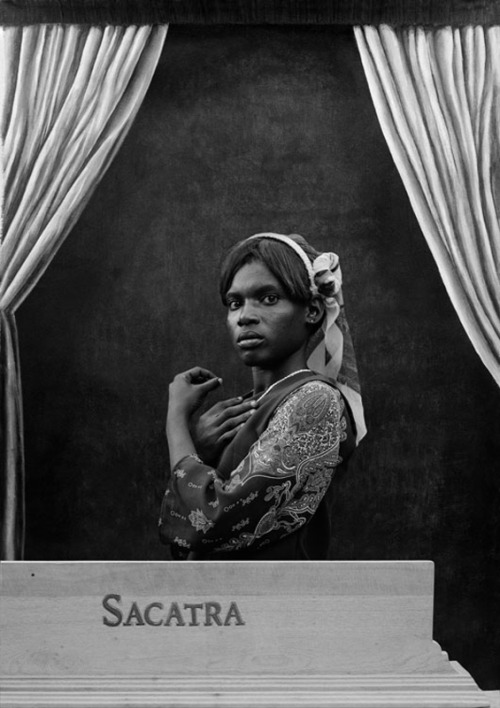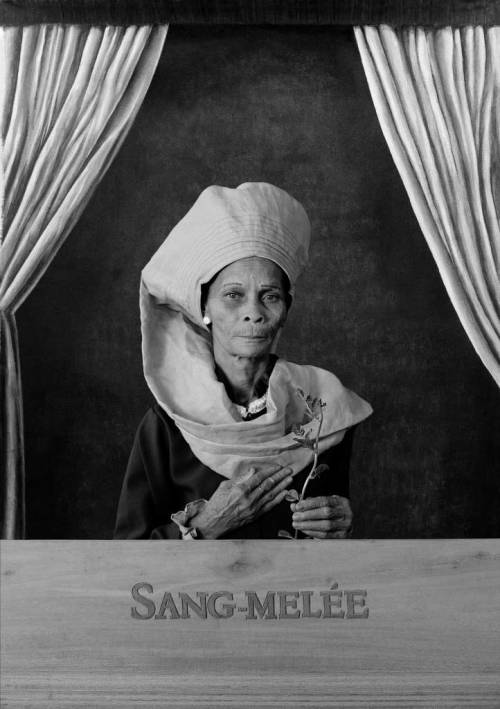afrodiaspores:Portraits from the series Caste, 2011. Holly Bynoe explains,Leah Gordon’s new photogra
afrodiaspores:Portraits from the series Caste, 2011. Holly Bynoe explains,Leah Gordon’s new photographs investigate the practice of the grading from [B]lack to white of skin colour, referred to as Caste, which revealed the extent of racial mixing in 18th century colonial Haiti…A measuring system which moves through black to white in nine degrees, it was developed by a French colonialist living in Haiti during the slave plantation period…There are nine degrees of shading in all, from pure [B]lack to 1/8 white, and 7/8 black and so on through ‘Sacatra’, ‘Griffe’, ‘Marabou’, ‘Mulâtre’, ‘Mamelouque’, ‘Quarteronné’ and ‘Sang-Mêlé’ to ‘White’.The images reference celebrated Renaissance portraits, styled so that they closely resemble, but don’t completely mimic, works such as Bellini’s Doge Loredan (Noir), The Betrothal of the Arnolfini by Jan Van Eyck and Holbein’s Lady with a Squirrel (Blanche). Gordon found her models in the Grand Rue area of Port-au-Prince, home to the artists’ collective Atis Rezistans. She worked with local craftsmen to make the costumes for the sitters and wooden plaques behind which the models stand, bearing the identifying names of the caste colours. There is a double impact here, both in the unexpectedness of seeing a [B]lack face in these familiar portraits and in seeing the dignity with which the sitters bear their signifying labels. -- source link
#grading#skin colour#caste#colonial society


